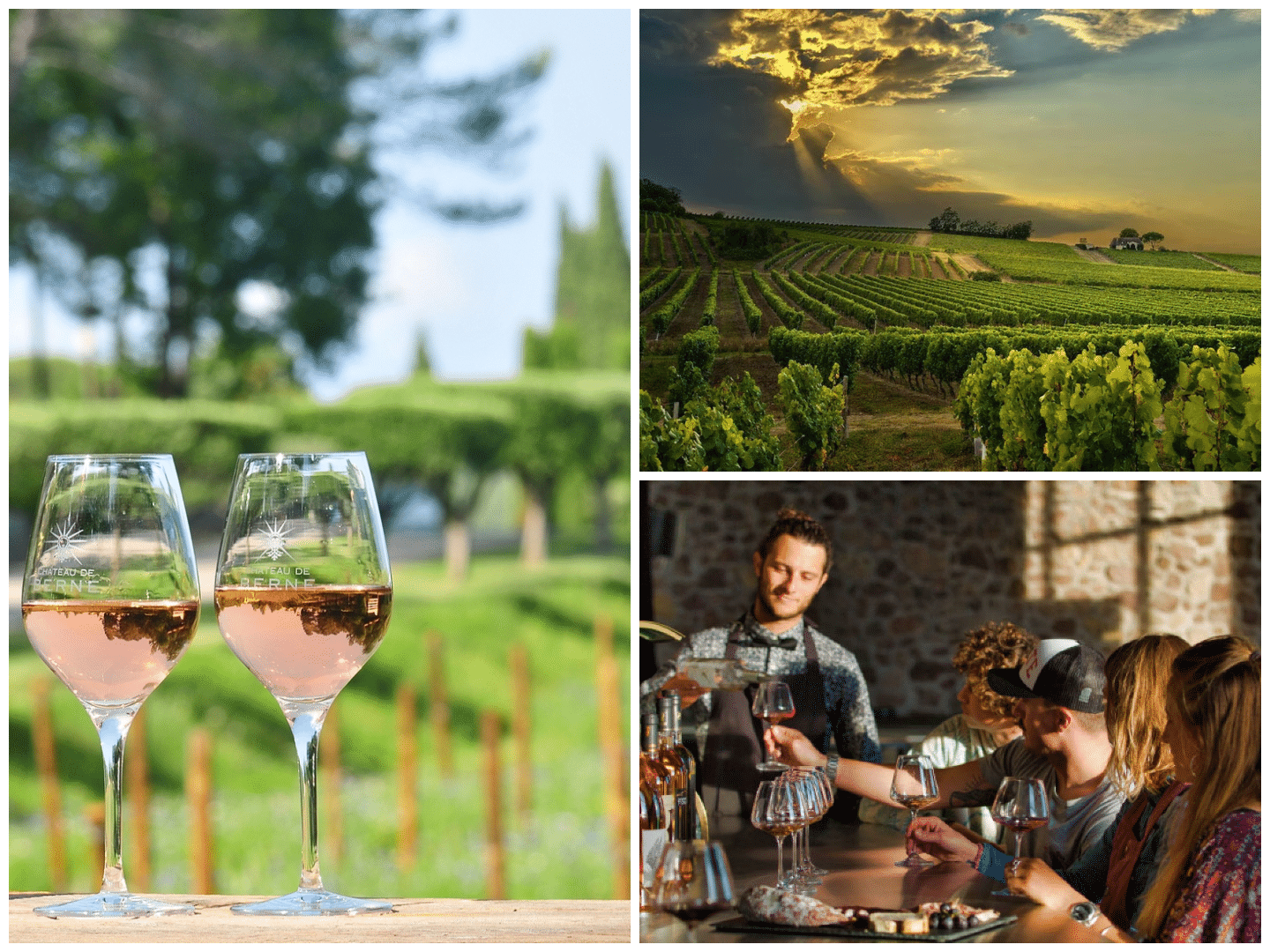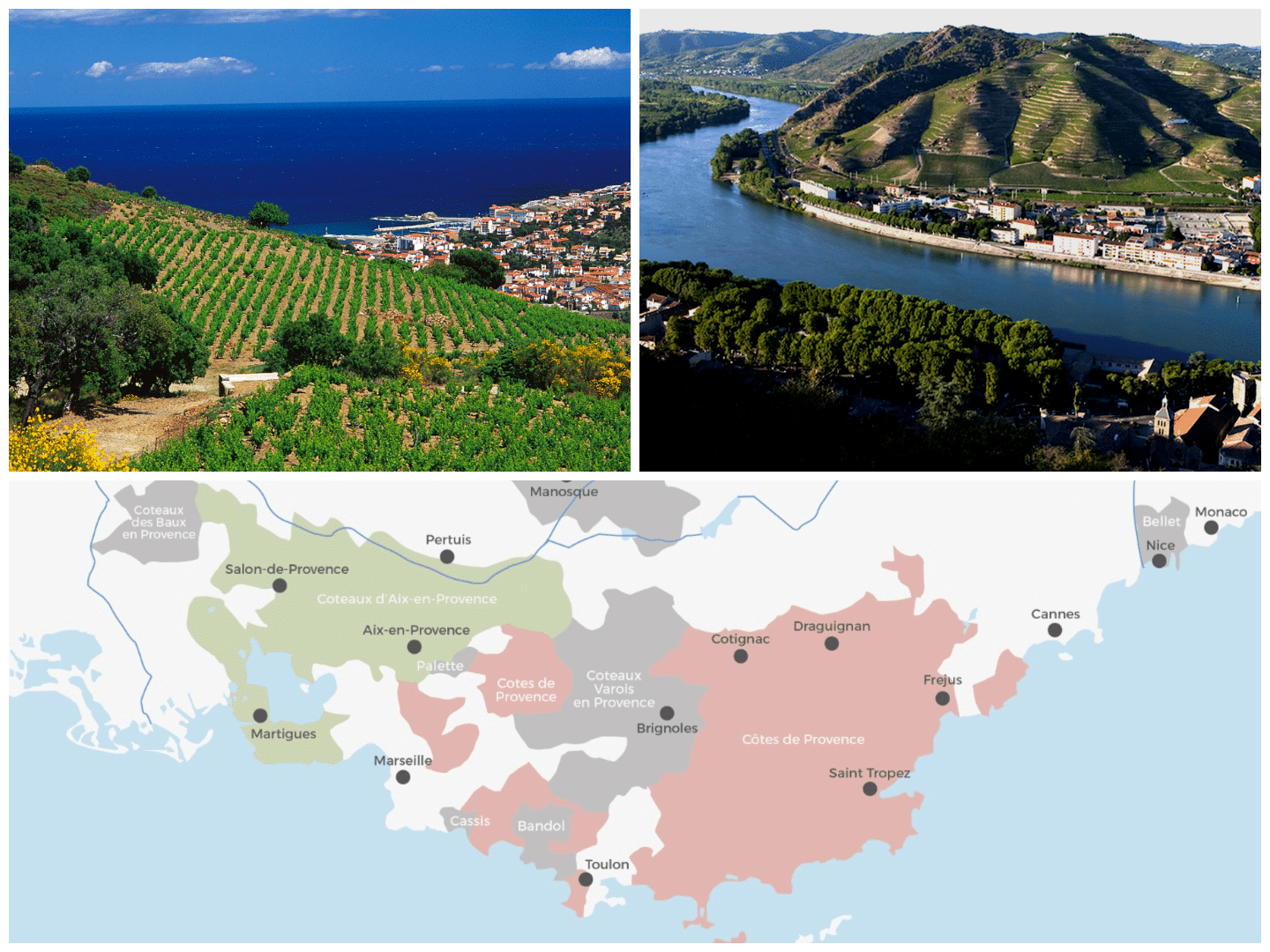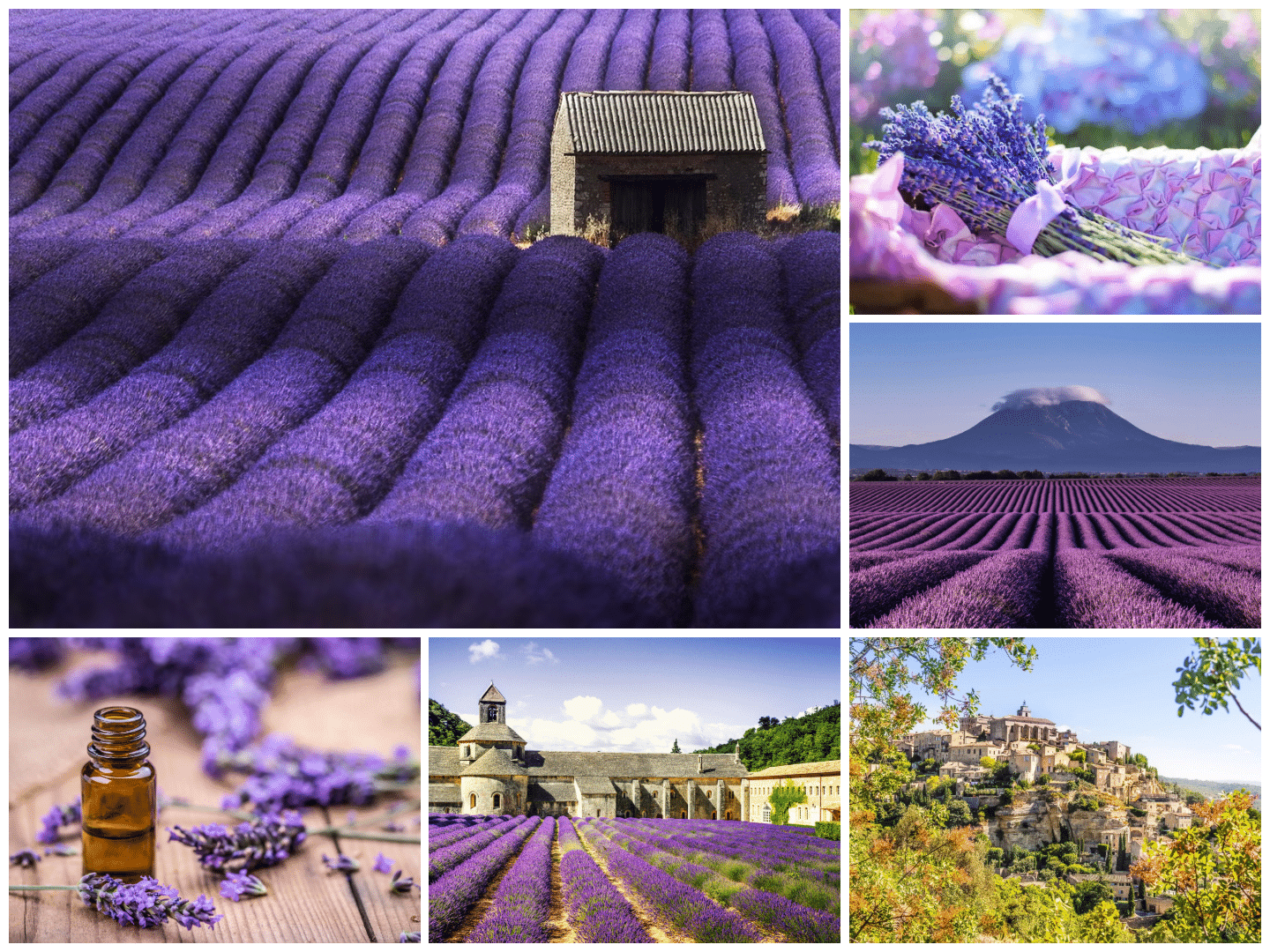The South of France has always been known for its historic towns, villages, lavender fields, stunning natural landscapes, delicious food, and fine wine. In this article, we’ll discuss Wine Tasting in Provence. Please stay with us if you want to visit this southern French region and learn more about it.

©Getty and En.experiencecotedazur.com
Our website includes affiliate links. So, remember that we may receive commissions when you click our links and make purchases. Please read our legal disclaimer document for more information about our Affiliate disclaimer and other disclaimers like the Fair-Use disclaimer.
Overview of Wine Tasting in Provence
For many, a visit to Provence becomes unforgettable due to the incredible opportunities to taste its renowned wines. Imagine being handed a glass of Rhône wine by a winemaker whose family has upheld the craft for generations; it’s a rich and timeless European experience. With a winemaking history that spans a millennium, Provence has long been celebrated for its exceptional rosés. The vineyards cascade across picturesque landscapes, historic cities, the Mediterranean coastline, and into the enchanting hinterland.
Stretching from the vibrant city of Nice to the scenic Camargue region, the Provence wine route offers a fantastic journey from the sea to charming mountain villages. This region has over 430 vineyards and cooperative cellars, all dedicated to producing high-quality wines. You can enjoy a personalized experience with expert wine tastings (sometimes for a small fee) and guided tours of wineries and vineyards, which often require an appointment. While you explore the boutique hotels of Aix-en-Provence between vineyard visits, don’t miss the breathtaking Sainte-Victoire Mountain, immortalized by the renowned painter Cézanne, or the ancient Roman amphitheater in Fréjus. Whether on foot, by bike, or even by boat, there are endless ways to discover these delightful vineyards.
About Provancal wines
The Greeks are believed to have planted the first grapes in France around 600 BC. The Romans later recognized Provence’s ideal climate for winemaking: mild winters and long, warm summers perfectly complemented by cooling winds. This sun-soaked, wine-loving region allows visitors to taste blended wines that boast unprecedented flavors compared to those at home. While we may enjoy good Cabernet Sauvignons, Merlots, and Pinot Noirs, the diversity of Rhône wines can be a delightful revelation.
French wines are often appreciated for their lower alcohol content, with a preference for subtler flavors. Pairing wine with food is essential; a bold, oaky wine can overshadow the nuances of classic French cuisine.
In France, stringent government regulations govern wine production, ensuring quality. Provençal vintners can blend a maximum of 13 distinct grape varieties (five white and eight red), a rarity in France. Châteauneuf-du-Pape stands out as the only region utilizing all 13 types, while most producers rely on blends of four or five, allowing for unique expressions of their craft.
Provence’s key growing areas yield rich, fruity reds and elegant, refreshing rosés, with only about five percent of production being white wine (the finest from Cassis and Châteauneuf-du-Pape). The region’s whites are typically light and tart, bursting with citrus and mineral notes, perfect as an aperitif. Remarkably, rosé wines account for 90% of Provence’s production, showcasing remarkable diversity from the lightest to the most intense. Provençal rosés are fresh and light, with delicate hints of small red fruits or citrus. These wines are particularly structured, developing aromatic notes of potpourri and sweet spices.
In Provence, rosé often takes the place of white wine. French-style rosés are distinctively crisp and fruity, ideal for warm days and Mediterranean dishes. Crafted from red grapes, the process begins with crushing the grapes and allowing the clear juice to mingle with the skins just long enough to achieve the beautiful pink hue (no longer than 24 hours). The rosés from Tavel, a charming town northwest of Avignon, are the darkest and most recognized outside Provence, yet you’ll discover excellent producers at reasonable prices throughout the region. If you haven’t tried rosé before, there’s no better place to indulge than here.

Here you can see the map of the wine regions in Provence. The upper left is the coastal wine region, and the upper right is the Rhone Valley region.
Wine Regions of Provence
The Provence wine region is gaining popularity, especially in top areas like Bandol and Cassis. It is one of the most underrated regions in France. Provence has nine wine areas with AOC status. The largest is Côtes de Provence, followed by Côteaux d’Aix-en-Provence and Côteau.
An AOC, or Appellation d’Origine Contrôlée, is a specific area for growing grapes. Each AOC has rules based on factors such as soil type, climate, and geography, which make it unique. These rules limit the types of grapes a grower can plant, how they must be grown, and the amount that can be harvested. Wines must meet specific blending percentages and regulated levels of alcohol and sugar.
Provence conjures images of lavender, sunflowers, olive trees, and wine. This region produces rosé as well as white and red wines.
Côtes du Rhône
The Côtes du Rhône, the area along the Rhône River from just south of Lyon to near Avignon, produces the king of Provençal wines. The reds from here are full-bodied, rosés are dry and fruity, and whites are dry and fragrant. Many subareas of the southern Côtes du Rhône are renowned for producing outstanding wines and have been awarded their appellations, including Châteauneuf-du-Pape, Gigondas, Beaumes-de-Venise, Côtes du Rhône-Ventoux, Tavel, and Côtes du Luberon.
Côtes de Provence
The lesser-known vineyards of the Côtes de Provence stretch east from Aix-en-Provence to St-Tropez. Typical grapes in this region include Cinsault, Mourvèdre, Grenache, Carignan, and some Cabernet Sauvignon and Syrah. The wines are usually full-bodied and fruity, meant to be enjoyed while young. They are less expensive than Côtes du Rhône wines but share similar qualities. This region is best known for its “big” rosés, which pair well with meat and garlic dishes. Rosé makes up 60 percent of local production. One highlight in the area is La Maison des Vins Côtes de Provence, an English-speaking wine shop and tasting center that offers bottles from hundreds of producers at vineyard prices. This is the largest AOC and the largest wine producer in the region, responsible for about 75% of wine production, with rosé accounting for 89% of that.
The region’s size means that various factors, including climate, altitude, soil, and rainfall, influence the vineyards. These factors can vary significantly, resulting in a 60-day gap between the start of harvest in coastal vineyards and those in inland areas.
Côtes de Provence contains four geographical subregions: Sainte-Victoire, La Londe, Fréjus, and Pierrefeu. Each subregion has unique characteristics affecting the grapes and wines produced there.
Côteaux d’Aix-en-Provence
This large wine region, located between Les Baux and Aix-en-Provence, produces a variety of red, white, and rosé wines. The grapes used in Côtes de Provence are often the same, but some producers near Les Baux focus more on Cabernet Sauvignon, which distinguishes their wines. The winemakers in Les Baux create excellent wines, many of which use organic farming methods. This region is the second largest in France and is significantly affected by the famous Mistral winds. The vineyards here date back to around 600 BC and were valued by the Royal Courts of Europe in the 15th century.
Rosé is the most popular wine here. It usually blends Grenache, Mourvèdre, Cinsault, Syrah, and Counoise. Cabernet Sauvignon is also grown, with the first plantings introduced by Georges Brunet, the owner of Château La Lagune, shortly after World War II.
Provençal Mediterranean
The seaside towns of Cassis and Bandol sit side by side, overlooking the Mediterranean just east of Marseille. Cassis, one of France’s smallest wine regions, is known for its strong, fresh, and very-dry whites (made with the Marsanne grape) — arguably the best white wine in Provence. Bandol is known for its lush, velvety red wines. This wine, aged in old oak and made primarily from the Mourvèdre grape, is one of my favorites.
Tips for Winetasting in Provence
Provence is peppered with wineries and wine tasting opportunities, even more so than the rest of France. For some visitors, trying to make sense of the vast range of wines can be overwhelming, particularly when faced with a no-nonsense winemaker or sommelier.
In France, the tasting experience is quite different. Although Provençal vintners are welcoming and more easygoing than in other parts of France, it’s still a profound, wine-focused experience. Your hosts are not there to make small talk and will likely be “all business.” Still, Provence’s shorts-and-T-shirt climate and abundance of hearty, reasonably priced wines make for an enjoyable experience, particularly if you’re patient and willing to take the time to learn about them.
Visit several private wineries or stop by a cave cooperative or a caveau — an excellent opportunity to taste wines from several local vintners in a single, less intimidating setting. You’ll have a better experience if you call ahead to a winery to let them know you’re coming. Even if they’re open all day, it’s good form to announce your visit. Ask your hotelier for help if needed. Avoid visiting places between noon and 2 p.m. — many wineries are closed then, and those that aren’t are staffed by people who would rather be at lunch.
Provençal winemakers are happy to work with you…especially if they can figure out what you want. When you enter a winery, it helps to know what you like (drier or sweeter, lighter or full-bodied, fruity or more tannic, and so on). The people serving you may know those words in English, but you’re wise to learn the keywords in French.
Remember that the vintner hopes you’ll buy a bottle or two. If you don’t make a purchase, you may be charged a small fee for the tasting.
Finally, we hope you enjoyed our short guide to winetasting in Provence. If you have more questions or suggestions, please write them in the comments below.
Take a look at

Best Day Trips from Paris
In this article, we will show you a few of the best day trips from Paris, which will help you

Lavender Guide – Provence
This Provence lavender guide will provide you with information about this famous plant, its uses, and its history. Furthermore, we

Top things to do in Marseille
In this Marseille guide, “The Top Things to Do in Marseille,” we highlight the must-see attractions and activities in this
Photo credits:
Feature photo: Getty
